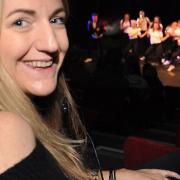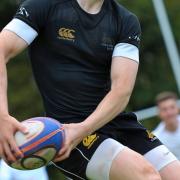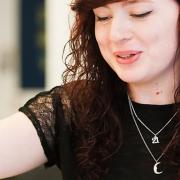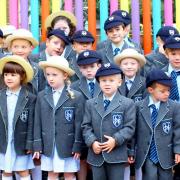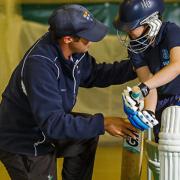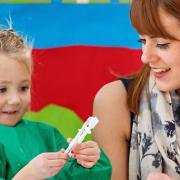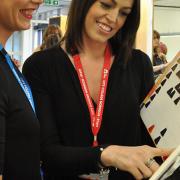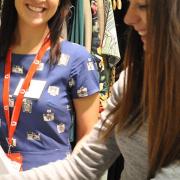Paying school fees and all the extras that go with it may not be as out-of-reach as you think, explains Adam Aiken.
Weighing up the costs
Paying school fees and all the extras that go with it may not be as out-of-reach as you think, explains Adam Aiken.
Pictures: Antony Kelly
Writer and PR consultant Ian Bullock moved his son, Gregory, to an independent school at the age of six in 2005 – a decision that was not taken lightly.
“My wife and I had always hoped that he would flourish in the state sector but, having attended a local state school for two years, we’d become unhappy with his progress, the large class sizes and the influence of disruptive pupils,” explains Mr Bullock.
“We are not privately educated ourselves and nor do we come from that kind of background, so it was by no means a natural or easy decision – and there are, of course, the fees. “But we only have one child and feel, rightly or wrongly, that we should offer our son the best education we can – and then hope that he takes full advantage of it.”
Mr Bullock and his wife, Julie, had been saving for the archetypal “rainy day”. When Gregory’s early school years began to worry them, they decided that the day had arrived. “Finding thousands of pounds a year for school fees is a huge commitment,” says Mr Bullock, whose son is about to join Year 6. “We’ve had some assistance from our family and we try to put money aside for the years ahead.”
The Bullocks chose Town Close House in Norwich, which is a short walk from their home. “Town Close has beautiful grounds and exceptional facilities, friendly staff, small, disciplined classes, a smart uniform and the solid, traditional values of a prep school,” says Mr Bullock, 46, a former EDP journalist who now runs his own PR consultancy.
“You obviously cannot expect your child to become an instant genius simply by throwing money at their education. It’s more about the school providing a happy, hard-working and supportive environment that brings out the best in every pupil.” It’s not surprising that the biggest issue for many parents opting for independent schools is the fees – and how to pay for them.
But as well as the fees, there are also costs for uniform, books, sports equipment, school trips and various extra-curricular activities.Robert Clarke, an independent financial adviser at Almary Green Investments in Norwich, says: “The fees are only part of the story. Parents need to liaise closely with schools to get a clear picture of the potential costs that lie ahead and to see what bursaries might be available. “Some schools promote schemes to help spread payment of fees and offer discounts for younger siblings.
“For a lucky few, the fees will be affordable out of regular income. However, you must be realistic that fees and the associated costs will increase each year and, in the current economic climate, job security is no longer a given for many people.” Mr Clarke suggests that people who cannot afford the pay-as-you-go option should consider three main methods of fee funding:
Borrowing
This can be something as simple as a loan, but another option is a mortgage.“You may be able to use a draw-down facility from your mortgage to assist with fees,” says Mr Clarke. “The obvious downside is that this can be slightly more expensive and securing school fees against the value of the family home may not be a good long-term strategy.”
Saving a lump sum
Fees will be payable over a long period, so it’s important to allocate any lump sum with that in mind.He explains: “Tax efficiency is key. Areas to look at include offshore bonds and the effective use of trusts.”
Regular savings
“The mantra here is the earlier the better,” he says. “The advantageous tax position of Isas makes them ideal. Aside from Isas, parents might consider unit trusts, investment trusts or monthly savings into tax-efficient offset mortgage accounts.It might also be worth speaking to grandparents to see if they can help. They may like to consider making use of their annual inheritance tax gift exemption of �3,000. And additional use of trusts can be of benefit in terms of both providing for the fees and inheritance tax planning. As well as budgeting for the fees, those responsible for the payments should not forget protection policies.“I always stress to clients that making provision for a life assurance payment on death or critical illness is essential,” Mr Clarke says.“Additionally, income replacement policies that will pay out if you are unable to work through illness or injury should be considered.”
The school’s view
Perhaps surprisingly given the economic climate, there has been an increase in the number of children being educated at independent schools.According to the annual census published by the Independent Schools Council (ISC) in April, 514,531 children attended its schools in 2009, up from 511,677 a year earlier.
Jim Hawkins, headmaster of Norwich School, said there had been a slight increase in the number of inquiries about assistance with fees, but his school had been able to help “in many cases”.He adds: “We, like many independent schools, set aside generous funds for means-tested bursaries.
“Norwich School currently offers financial assistance totalling about �500,000 a year. More than 140 boys and girls have substantial reductions, and some pay no fees at all. “This funding comes in part from the school’s fee income but also through outside bodies such as the Worshipful Company of Dyers, the Cathedral Choir Endowment Fund, the Ogden Trust, alumni, Friends of Norwich School and other sources.”About 170,000 pupils at ISC schools (about a third of the total) have received help with their fees in 2009, with the value of that assistance amounting to more than �490m.
Mr Hawkins – whose school this year charges full fees of �10,179 for children aged seven to 11, and �11,043 for those aged between 11 and 18, compared with last year’s ISC average of �11,799 – says schools themselves have filled the gap since the government pulled its assisted places scheme. “The loss of assisted places was a great challenge to many independent schools,” he admits.
“At the height of the scheme in 1998, 40,331 pupils were helped through independent schools by government funding. Although that money has been withdrawn, independent schools have increased the number of directly assisted pupils by 44,733 since 1998 – more than making up the difference.”
Mr Hawkins adds: “Surprisingly few people seem to know about the generosity of means-tested funding in the independent sector.“Its schools are not as out-of-reach as one may think. The so-called ‘elite’ independent sector is accessible to many via its means-tested bursary schemes. “As a result, private schools are often very effective agents of social mobility.”



